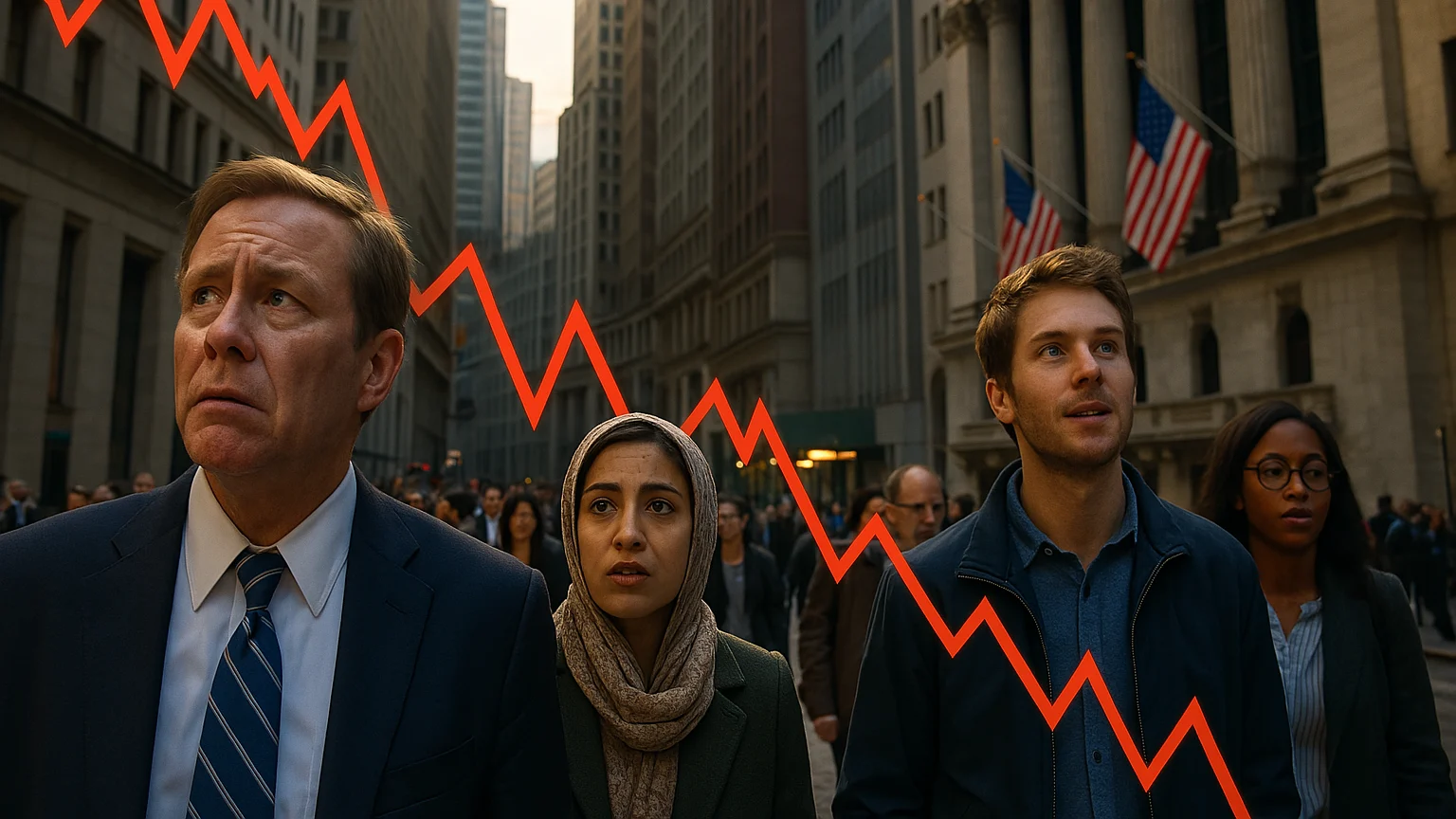Introduction:
Trade war tremors challenge Wall Street’s stability, yet markets reveal signs of forging a stronger path. The U.S., China trade war, driven by tariffs, jolts stocks, disrupts supply chains, and prompts businesses to adapt strategies. From tech giants to rural farmers, the impact spans wide, reshaping industries as costs rise and trade routes shift. Investors face tough decisions, but many innovate, discovering new opportunities in a turbulent landscape. Some firms transform obstacles into successes, showcasing deep resilience.
In this article we will turn our focus to understand how tariffs stir confusions, which sectors absorb the heaviest blows, and whether measures like a tariff pause signal Wall Street’s ability to stand firm. With insights from trusted sources like Investopedia to understand about history of trade wars , the analysis highlights global ripples, investor responses, and policy shifts shaping the market’s vitality.
In our analysis we will also cover “what steadies traders and businesses amid uncertainty” offering a glimpse into the strategies that might guide the financial world forward. As markets navigate these challenges, new alliances form, and leaders emerge with creative solutions, blending caution with optimism. The interplay of economic forces continues to test resilience, pushing Wall Street to evolve while balancing the risks of global trade tensions with the promise of recovery
Table of Contents
How Tariffs Sparked the Chaos:
Tariffs struck like a shockwave, and trade war tremors shook Wall Street’s core. U.S. firms importing from China faced steep costs, slashing profits and spooking traders. Stocks like Boeing and Apple slid as supply chains hit roadblocks, with fixes slow to surface. The Dow swung wildly on tariff headlines, creating unease.
The goal was to boost U.S. industries, but many faltered. Farmers lost markets—soybeans to China vanished—while manufacturers dealt with pricier inputs. For financial security amid market swings, investors and traders craved for clarity, but each policy twist fueled doubt.
Small businesses felt the pinch most. Many of the cut budgets to survive, while larger firms sought new suppliers. The chaos reshaped market flows. Smarter strategies are emerging, though scars linger.
Sectors That Felt the Heat:
Trade war tremors slammed some sectors, leaving deep marks. Tech took heavy hits—China supplies chips for phones and servers, so firms like Intel saw stocks dip when costs spiked. Agriculture suffered too; soybean exports to China tanked, dragging agribusiness shares down. Those were tough blows.
Manufacturing faced trouble. Steel tariffs spiked costs for carmakers like GM, squeezing margins and cutting jobs. For stability in volatile times, explore top-rated insurance companies of the US. Investors fled risky sectors, piling into safer ones like utilities.
Not every sector buckled. Healthcare stayed solid—people need care, tariffs or not. The split between winners and losers shows markets can pivot under strain. Some sectors hint at recovery, sparking hope.
Investors Caught in the Crossfire:

Trade war tremors rattled investors, turning portfolios into stress tests. Everyday traders—your friend on a trading app—sold stocks fast when tariff news broke, fearing losses. Hedge funds played savvier, shorting weak firms or grabbing gold for safety. The Volatility Index soared, reflecting raw nerves.
Social media buzzed with hype and fear, stirring chaos. New traders chased quick wins, while pros leaned on data. To navigate market ups and downs, see best investment stocks with insurance edge. Big players shifted to local firms, dodging global trade risks.
Confidence waned at times. Every dip stung, but traders adapted quick. More now hold firm or buy low. That shift signals growing grit.
Global Ripples Kept Markets Guessing:
Trade war tremors spread far, shaking markets worldwide and tugging Wall Street along. China’s demand for U.S. goods fell, hitting exporters like John Deere, whose stocks wavered. Europe countered with tariffs, clipping brands like whiskey makers, with shares feeling the pinch. Emerging markets faltered too.
Supply chains grew messy. Firms sought new sources—think Mexico or Vietnam—but costs and delays stacked up. For global market insights, check top insurance companies of European Union. Trade-heavy stocks, like multinationals, took the worst hits.
Some saw gains. Reshoring lifted U.S. suppliers, boosting smaller players. Trade war tremors proved markets are linked tight, but pivots show promise. Wall Street stays vigilant, yet steadier.
Trump Tariff Pause:
Tensions over the trade war eased after Trump announced a change in tariffs, catching the market’s attention. On Truth Social, he said over 75 countries had reached out to the U.S. to find a solution and hadn’t retaliated, as he advised. So, he approved a 90-day pause and cut the reciprocal tariff to 10%, starting right away. Reuters reported it as an effort to reduce tensions. Wall Street reacted strongly—the S&P 500 rose 9.5%, and retailers like Walmart saw big gains.
Global markets showed mixed vibes. Europe edged up, hopeful for smoother trade, but Asia stayed cautious, doubting the pause’s scope. The move cut supply chain stress. Traders cheered, though China’s response looms large.
More pauses possible? Talks with 75 countries suggest momentum, but China’s exclusion keeps risks alive. Progress could spark relief; setbacks might revive tariffs. Markets lean hopeful, banking on calm.
Signs of Recovery—Solid Progress?
Trade war tremors have quieted, and markets signal real strength. Corporate earnings shine—logistics firms thrive on new trade routes. The Nasdaq holds steady, showing resilience despite small jolts. Small businesses face tight budgets but push forward.
Investors grow bolder. More buy on dips than panic-sell, a leap from earlier fears. For market insights, see trade war pushes Nasdaq to bear market. Trade talks with China remain a wild card, but confidence builds.
Businesses get creative. New suppliers and local production lift sectors like clean energy, dodging trade traps. Wall Street’s not bulletproof, but it’s tougher. These gains look promising and worth tracking.
Policy Swings Keep Us Watching:
Trade war tremors sprang from policy bets, and politics still shape Wall Street’s path. Tariffs aimed to shield U.S. jobs, winning cheers and drawing flak. Every speech or social media post sent stocks jumping or slipping. Congress stayed quiet, letting policy steer.
Talks with China sway—steps forward, then stalls. Investors want clarity, but politics cloud it. For business stability, try pandemic business interruption insurance. The tariff pause proved policy can spark quick gains.
A clear path would help heaps. Traders bet on deals, but election buzz adds twists. Wall Street rides these shifts, and we’re keeping tabs. Firm policy could lock in progress.
Politics and Policy: The X-Factor:
Trade war tremors stem from bold policy calls, and politics still run the show. Tariffs were pitched as worker wins, sparking praise and pushback. Each announcement—online or onstage—had traders guessing next moves. Congress sat back, leaving policy in charge.
China talks teeter—progress, then pauses. Investors hunt certainty, but political noise blurs it. For stock market strategies, check best insurance stocks to buy for investment and trading. The pause showed policy’s power to lift markets.
Deals could cement gains. Global talks and elections toss curveballs, though. Wall Street’s navigating it all, and we’re watching and monitoring closely. Clear policy might seal the deal.
Conclusion:
We’ve mapped how trade war tremors shook Wall Street, from tariff chaos to sector struggles and global ripples. Tech and farmers faced rough blows, but markets show grit—earnings pop, and investors act bolder. The Truth Social tariff pause fueled a rally, though policy twists keep us alert. For your security, explore top insurance companies in the US to stay covered as markets shift, as per Bloomberg. Track talks and policy moves—Wall Street’s gaining ground, so stay sharp and never forget to keep your comments.
Disclaimer:
This article on trade war tremors and Wall Street’s journey aims to inform, not advise. We strive to clarify market trends in a clear, engaging way, backed by trusted sources. Markets change fast, so consult a financial pro before acting. Data reflects broad patterns but isn’t a sure bet. We’re not liable for choices based on this piece.
Data Sources:
We tapped top-tier sources to unpack trade war tremors and Wall Street’s response. Investopedia explained trade war basics, while Reuters detailed the Truth Social media tariff pause. Bloomberg shared market insights, and Wikipedia traced the trade war’s arc. Through these high-authority and trusted sites, we have tried our best to make this article accurate and reliable for viewers.
I create clear, insightful content on finance, insurance, and investing. I use original visuals made with AI tools like ChatGPT, Copilot, Groke3, Gemini, and Canva to ensure quality and authenticity. Before publishing, each article is carefully edited by a dedicated editor. Connect with me on LinkedIn for more updates and insights.
